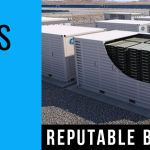 California’s Self-Generation Incentive Program (SGIP), the scheme to incentivise the use of distributed energy, opens for applications at the beginning of next month, weighted to favour energy storage.
California’s Self-Generation Incentive Program (SGIP), the scheme to incentivise the use of distributed energy, opens for applications at the beginning of next month, weighted to favour energy storage.
When it comes to solar, SGIP has previously been a success in the US state and is administered by the utilities Pacific Gas & Electric (PG&E), Southern California Edison (SCE) and Southern California Gas Company (SoCal Gas) as well as the Center for Sustainable Energy.
The programme awards “financial incentives for the installation of new qualifying technologies that are installed to meet all or a portion of the electric energy needs of a facility”. Through to the end of 2019 a total of US$270,165,000 will be made available through SGIP to the programme administrators: just over US$117 million for PG&E, US$91 million for SCE, just under US$36 million for the Center for Sustainable Energy and US$26 million for SoCal Gas.
The biggest change to SGIP is that as of this year, 75% of funds will be allocated to energy storage technologies, and just 25% for generation technologies. Residential energy storage projects of less than 10kW will comprise 15% of the energy storage portion. When the intended budget allocation was announced last summer, GTM Research head of energy storage Ravi Manghani called it a “big win” for the energy storage industry.
The programme opens for formal applications on 1 May 2017. For residential systems smaller than 10kW and systems larger than 10kW that do not take the Investment Tax Credit (ITC), incentive levels are set at US$0.50 per watt-hour. Projects larger than 10kW that take the ITC will receive US$0.36 per watt-hour. These are just the initial figures – incentive levels will come down by US$0.10 per watt-hour once demand has exceeded available funding. If this lowered rate proves popular enough to have allocated all of its budgeted funding within 10 days, the rate drops by the same amount again.
Click Here to Read Full Article
read more
 In the world of electricity, few topics are generating more headlines this year than
In the world of electricity, few topics are generating more headlines this year than  A new pilot project from Illinois’ largest utility is bringing energy storage out from behind the substation and into the neighborhood.
A new pilot project from Illinois’ largest utility is bringing energy storage out from behind the substation and into the neighborhood. The energy storage market will expand dramatically in the coming years from an annual installation size of
The energy storage market will expand dramatically in the coming years from an annual installation size of  North America has well over 20 GW of utility-scale PV with hundreds of MWs coming on yearly. Energy storage can help maximize the production of both existing and new utility-scale PV installations. In this free guide, Dynapower — the leading manufacturer of utility-scale inverters with over 350 MWs installed worldwide — provides a comprehensive overview of the three systems for coupling solar with storage — AC-coupled, hybrid plus storage, and a new approach DC-coupled with a converter. In addition to a system overview of each solution, Dynapower provides an analysis of the value streams each system type can bring online for installation owners to boost production and revenues.
North America has well over 20 GW of utility-scale PV with hundreds of MWs coming on yearly. Energy storage can help maximize the production of both existing and new utility-scale PV installations. In this free guide, Dynapower — the leading manufacturer of utility-scale inverters with over 350 MWs installed worldwide — provides a comprehensive overview of the three systems for coupling solar with storage — AC-coupled, hybrid plus storage, and a new approach DC-coupled with a converter. In addition to a system overview of each solution, Dynapower provides an analysis of the value streams each system type can bring online for installation owners to boost production and revenues. For months, the energy storage market has lived in very few places, making it hard to get too excited about updates to the market leaderboard. But that’s starting to change.
For months, the energy storage market has lived in very few places, making it hard to get too excited about updates to the market leaderboard. But that’s starting to change. Arguing that energy storage is “critical to ensuring a resilient, reliable, cost-effective and sustainable grid”, the Energy Storage Association joined with 52 other organisations to plead the place of storage in the Trump’s administration’s infrastructure priorities.
Arguing that energy storage is “critical to ensuring a resilient, reliable, cost-effective and sustainable grid”, the Energy Storage Association joined with 52 other organisations to plead the place of storage in the Trump’s administration’s infrastructure priorities. “
“ Since the invention of electricity there is always a challenge to store it for future use. With the technological advancement, battery storage has offered a way to store energy chemically-especially renewable energy, so that it can be used at the point of demand or to balance grid. Amid surge in solar and wind power generation and their intermittent nature, the battery storage demand has increased manifold, and now batteries are big enough to give power backup to mega cities.
Since the invention of electricity there is always a challenge to store it for future use. With the technological advancement, battery storage has offered a way to store energy chemically-especially renewable energy, so that it can be used at the point of demand or to balance grid. Amid surge in solar and wind power generation and their intermittent nature, the battery storage demand has increased manifold, and now batteries are big enough to give power backup to mega cities.



